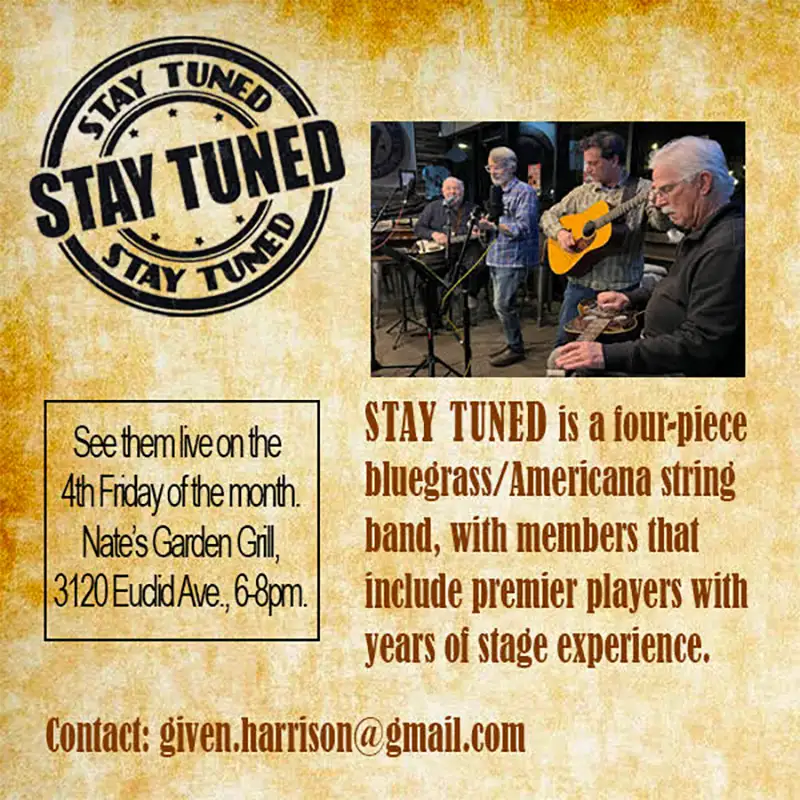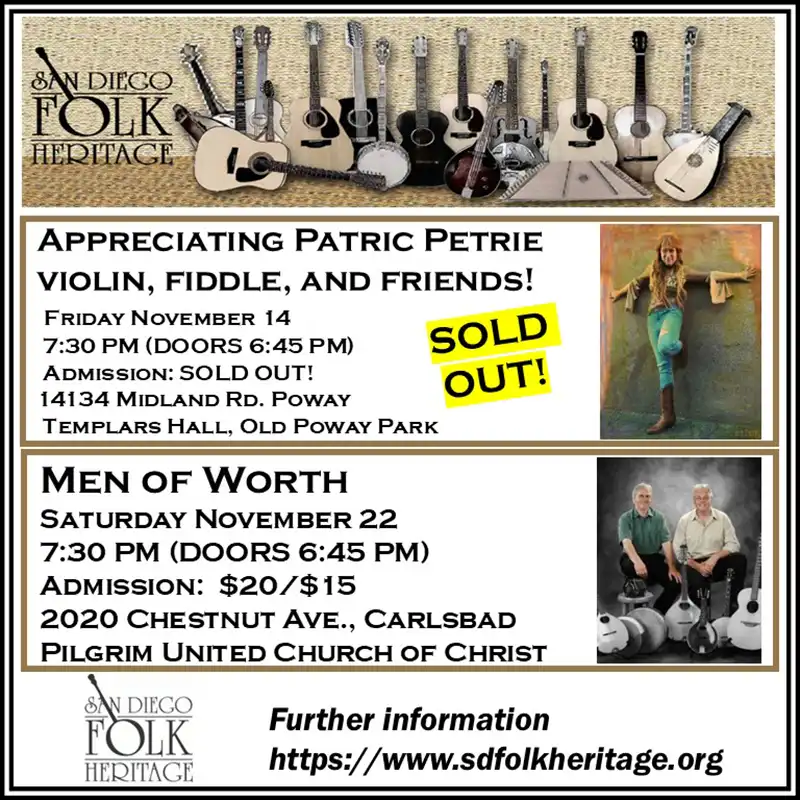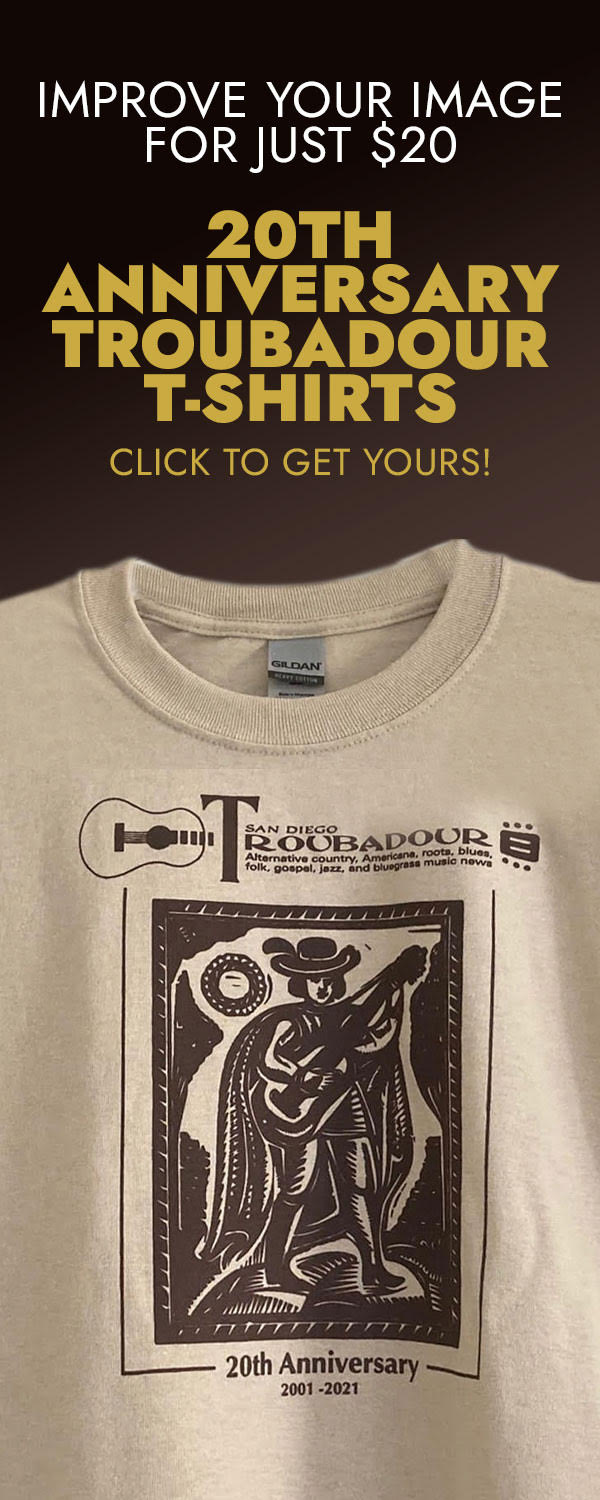Ask Charlie...
Theoretically Speaking…
Hello Troubadourians! Do you remember your guitar teacher… or really any music teacher you’ve ever had? Some of us took private lessons, some of us had some music training in school, and many of us are self-taught. Regardless of where and how you started, have you continued to add to your musical knowledge? That concept encompasses many things: knowledge of your instrument (including your voice), music theory, chord progressions, chord construction, melody and harmony, rhythm and time, etc. Those, and more, are the formal constructs that most of us have heard about and some of us have studied. The question is—do we apply any of them to our playing, either consciously or subconsciously? The answer to the first half of that question informs the second half. If the answer to the first half is no, the second half is moot. But I don’t believe that any accomplished musician can truthfully answer no to the first half. Why? Because if you realize that the C chord you played in one song is the same as the C chord you played in another song, you’ve applied some very basic knowledge of theory. It really can be that simple. It can also be maddeningly complex and confusing.
But these days we’re in luck! There are dozens of music training courses available online. Some are focused on a specific instrument; some are more generic. Either way, the knowledge is available if one is interested in learning. But which one is the best? A better question is: which one is the best for you? That answer really depends on what you already know and is the material written in a manner that makes sense to you. That is the key; it doesn’t matter how well-written, thorough, and accurate any particular course is, if you can’t understand it, it is of no use. You can’t apply it to your playing or receive any benefit for your time and money.
Understanding theory was often difficult for me. Fortunately, I started early and I had an excellent teacher. I began taking formal lessons at age 12 from Marty Stewart. I’ve mentioned him in previous columns and I can’t emphasize enough how important it was for my development as a guitarist to have Marty as my teacher. Background: Marty was a jazz guitarist when the guitar wasn’t completely respected in jazz circles. The guitar was often considered to be a “hillbilly” instrument and he made it his life’s work to learn as much about music as he was able to in order to gain the respect of his peers in the music business who played more respectable instruments like piano and saxophone. His knowledge and understanding were incredibly important to how I was able to learn and understand music theory. When I started taking lessons, I obviously wanted to learn to play the guitar. Marty said he would definitely do that. He also said that he would teach me to be a musician. And he explained what that meant—that beyond simply playing an instrument, he made it clear that playing music required the understanding of other instruments and where the guitar should fit within the context of a band. While that instruction wasn’t what I signed up for, I have found it invaluable and it has made me a much better musician. That I learned it early, and essentially without questioning why I was being taught it, learning theory gave me a deeper understanding of what I was learning on the guitar.
The first thing I learned was the circle of fifths. If you don’t know what this is, I suggest that you look it up and learn how it works. I have found the circle of fifths to be essential in understanding song structure and how to follow a song that I haven’t heard before. Knowing how most music and chord progressions are structured is an excellent background and support to ear training. It is essential for musicians to learn to hear where a song is moving through its progression. There are compositional exceptions, of course, but using the circle of fifths is an excellent tool to guide and limit the possibilities of what the next chord will likely be. While the circle of fifths made immediate sense to me, there are other components of music theory that were and are much more difficult that weren’t immediately clear. Earlier, I said that to be useful, the material has to be written in a manner that makes sense to you. I have come across many lessons and texts that while musically correct, they are written from a perspective that I don’t understand. Context is everything and you need to know what your specific context is so that you can build upon it. Chord construction is invaluable for musicians and guitarists in particular, since there are usually several fingerings and positions to play the same chord on a guitar. As the complexity of the chord increases, knowing what to call it also becomes more complicated. I found that if I didn’t know what to call a chord, or if I was reading a chart where the chord was named in a manner I didn’t understand—I couldn’t put the chord into the context of the rest of the chords—I couldn’t process what to play. Early in my learning I heard about a book called Chord Chemistry by Ted Greene. Widely considered the Bible for learning and constructing chords for the guitar, I figured that it would benefit me to read it. Marty had an encyclopedic knowledge of chords and chord substitution, so being eager to learn as much as I could about chords, I, of course, immediately bought a copy. I think it took me about five minutes to realize that the information contained in the book was way beyond my understanding. I also had no context in which to frame the information, so I set the book aside and I haven’t looked at it again. Maybe I should have asked Marty to explain it to me but I was embarrassed that I didn’t get it. I still have it somewhere and it is possible that some 50 years later I have enough knowledge to decipher the information in the book. Maybe not. Maybe it doesn’t matter. My point is that over time I have figured out a lot of things about theory and chords just by being curious and having the desire to learn and get better as a musician and guitarist.
In addition to learning theory, Marty said that I needed to learn songs. He might have told me why he wanted me to learn songs but at the time I didn’t really understand. Now I was learning songs at the time—songs from John Denver, the Eagles—this was also when I was attempting to learn chord substitution and my pre-adolescent brain convoluted the two activities and both came crashing down. Much later, I figured out what he was after. He wanted me to learn songs so that I would in doing so, learn how songs are constructed. He knew that the more songs I learned, the more I would understand how to apply the theory I was learning. He also knew that while the advanced chord construction and jazz concepts he had shown me were way beyond my understanding at the time, I had enough curiosity and ambition that I would continue to explore them long after I was no longer taking lessons from him. He was right.
One of the last things that Marty presented was the idea of songwriting. Songwriting is an opportunity to explore and implement the theory lessons that we learn. It becomes real when creativity intersects with theory. This is where songs come from. I guess I figured this out by doing it, and by hanging out with some really good songwriters. I have also learned the differences between composition, songwriting, and arrangement. I’ll leave that discussion for another time.
Need to know? Just ask… Charlie (ask.charlie@hotmail.com)








